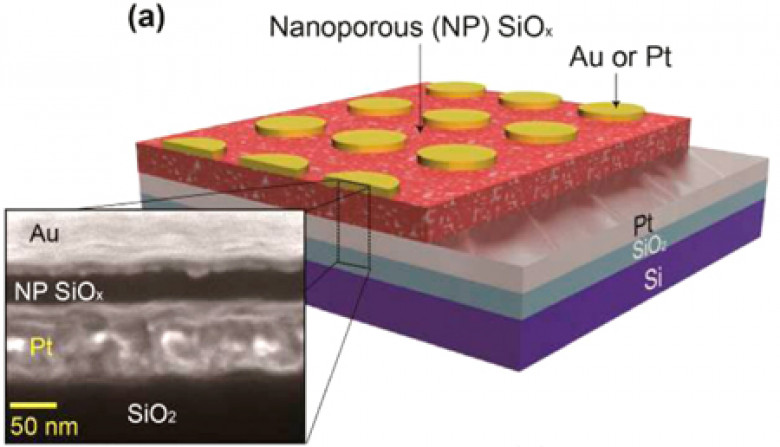Computer memory that can store about one terabyte of data on a device the size of a postage stamp
High-density, next-generation computer memory that can store about one terabyte of data on a device the size of a postage stamp — more than 50 times the data density of current flash memory technology — is now a step closer to to mass production.
That’s because Rice University’s breakthrough silicon oxide technology will allow manufacturers to fabricate “resistive random-access memory” (RRAM) devices at room temperature with conventional production methods, the researchers say. In a new paper in Nano Letters, a Rice team led by chemist James Tour compared its RRAM technology to more than a dozen competing versions.
“This memory is superior to all other two-terminal unipolar resistive memories by almost every metric,” Tour said. “And because our devices use silicon oxide — the most studied material on Earth — the underlying physics are both well-understood and easy to implement in existing fabrication facilities.” Tour is Rice’s T.T. and W.F. Chao Chair in Chemistry and professor of mechanical engineering and nanoengineering and of computer science.










































































